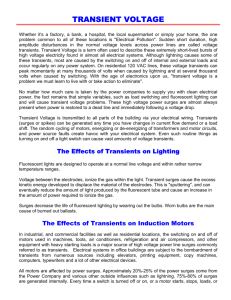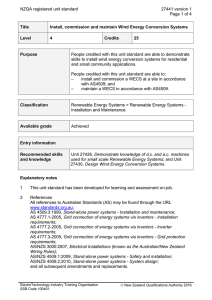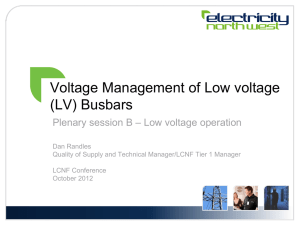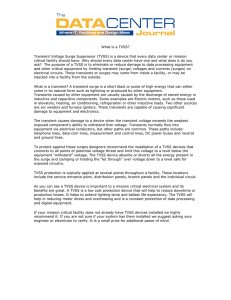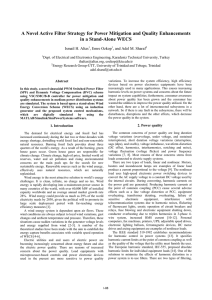- Krest Technology
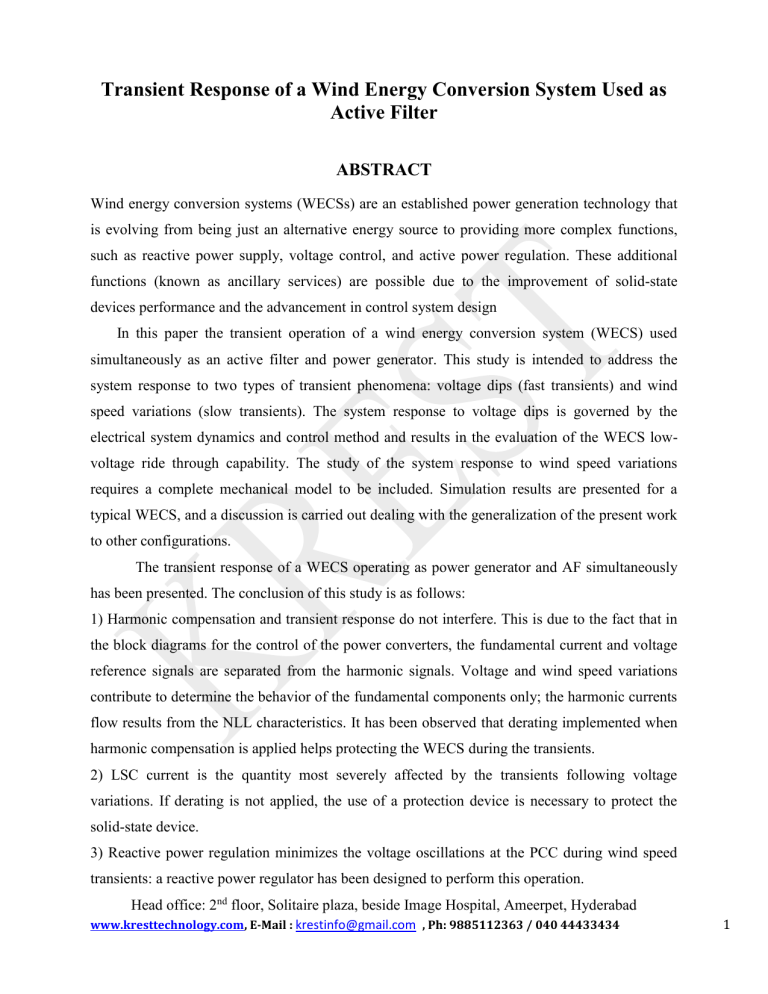
Transient Response of a Wind Energy Conversion System Used as
Active Filter
ABSTRACT
Wind energy conversion systems (WECSs) are an established power generation technology that is evolving from being just an alternative energy source to providing more complex functions, such as reactive power supply, voltage control, and active power regulation. These additional functions (known as ancillary services) are possible due to the improvement of solid-state devices performance and the advancement in control system design
In this paper the transient operation of a wind energy conversion system (WECS) used simultaneously as an active filter and power generator. This study is intended to address the system response to two types of transient phenomena: voltage dips (fast transients) and wind speed variations (slow transients). The system response to voltage dips is governed by the electrical system dynamics and control method and results in the evaluation of the WECS lowvoltage ride through capability. The study of the system response to wind speed variations requires a complete mechanical model to be included. Simulation results are presented for a typical WECS, and a discussion is carried out dealing with the generalization of the present work to other configurations.
The transient response of a WECS operating as power generator and AF simultaneously has been presented. The conclusion of this study is as follows:
1) Harmonic compensation and transient response do not interfere. This is due to the fact that in the block diagrams for the control of the power converters, the fundamental current and voltage reference signals are separated from the harmonic signals. Voltage and wind speed variations contribute to determine the behavior of the fundamental components only; the harmonic currents flow results from the NLL characteristics. It has been observed that derating implemented when harmonic compensation is applied helps protecting the WECS during the transients.
2) LSC current is the quantity most severely affected by the transients following voltage variations. If derating is not applied, the use of a protection device is necessary to protect the solid-state device.
3) Reactive power regulation minimizes the voltage oscillations at the PCC during wind speed transients: a reactive power regulator has been designed to perform this operation.
Head office: 2 nd
floor, Solitaire plaza, beside Image Hospital, Ameerpet, Hyderabad www.kresttechnology.com
, E-Mail : krestinfo@gmail.com
, Ph: 9885112363 / 040 44433434 1
Block diagram for proposed system
DESIGNG SOFTWARE AND TOOLS:
MATLAB /SIMULATION Software and simpower systems tools are used. Mainly control system tools, power electronics and electrical elements tools are used.
Head office: 2 nd
floor, Solitaire plaza, beside Image Hospital, Ameerpet, Hyderabad www.kresttechnology.com
, E-Mail : krestinfo@gmail.com
, Ph: 9885112363 / 040 44433434 2

